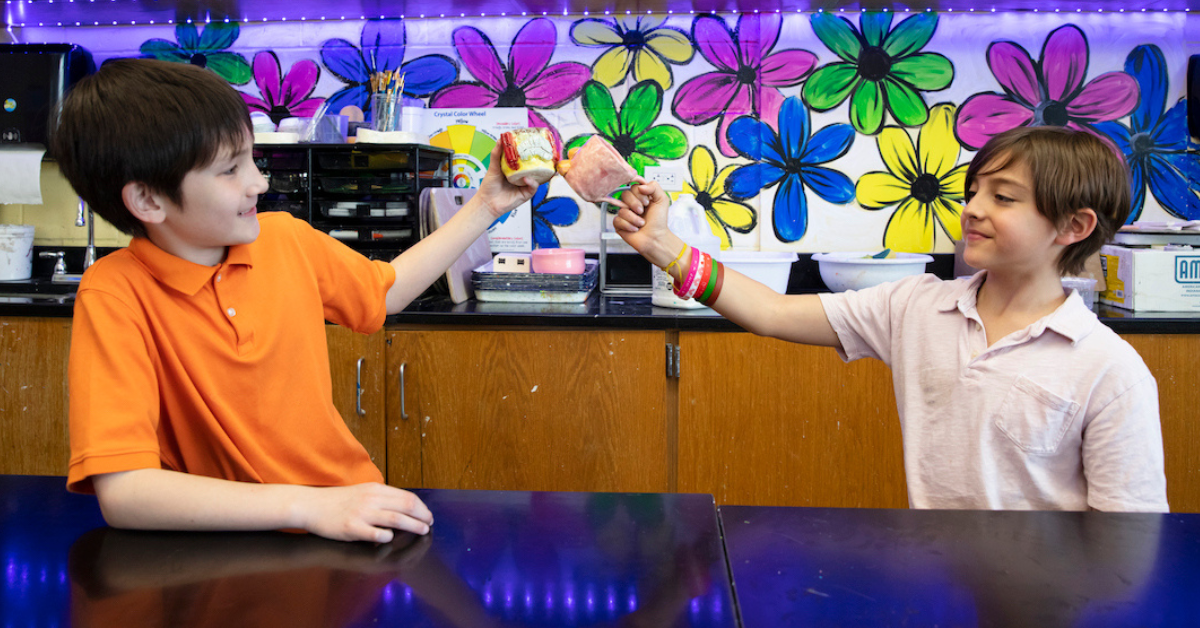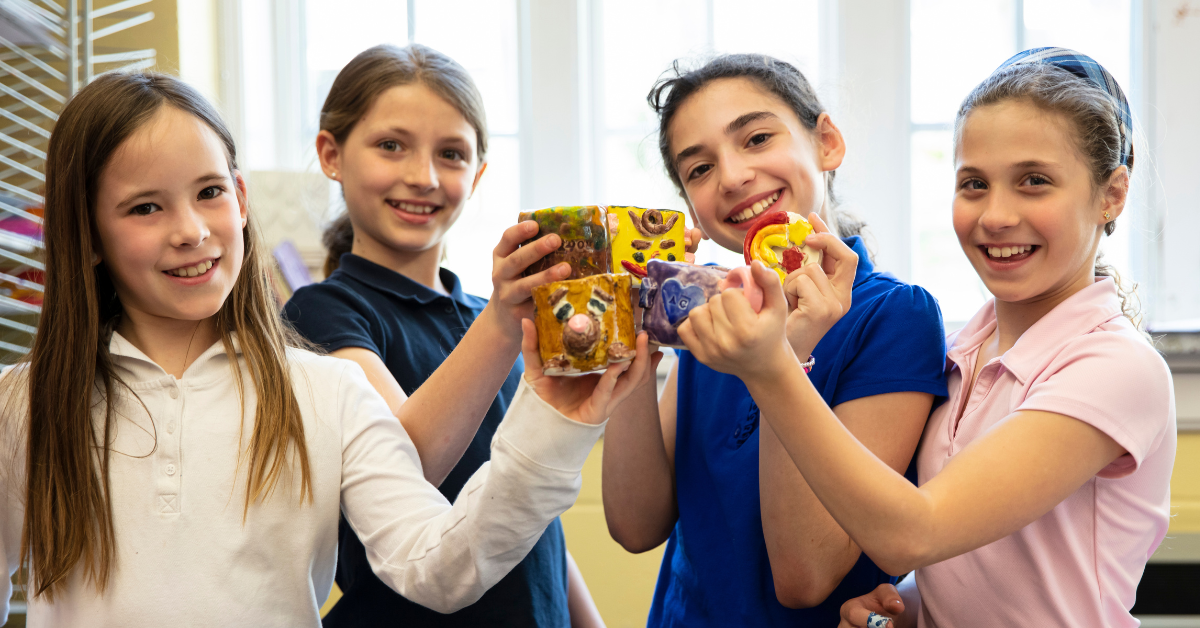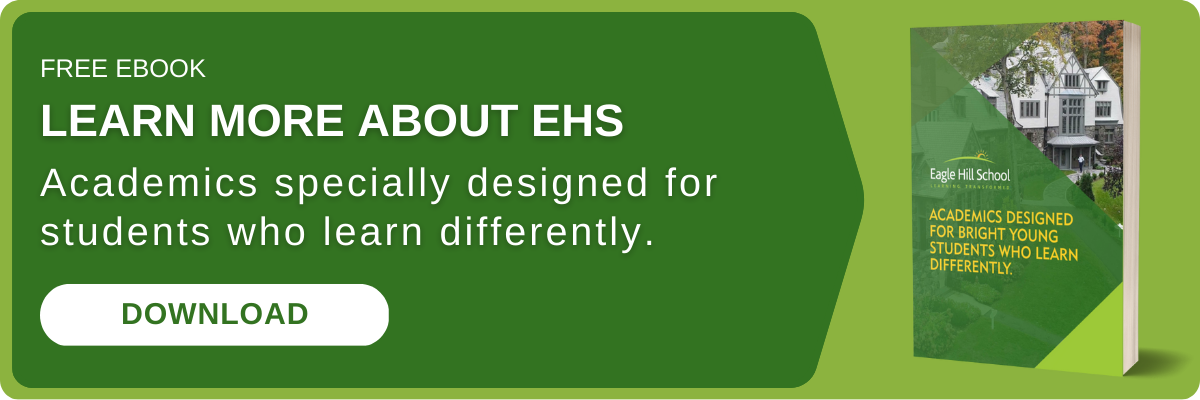Parents of children with learning differences might wonder about creative ways for their children to express themselves and learn how to develop written and verbal communication skills without unnecessary pressure.
For many reasons, children with learning differences can significantly benefit from their creative and artistic expression skills. Artistic mediums like drawing, painting, or sculpting allow children with learning differences to express their emotions and inner thoughts without feeling pressured to speak everything in their minds. Artistic expression can improve communication skills and help your child learn healthy methods to express themselves.
Parents of children in elementary or middle school whose child has learning differences should understand how their child will benefit from artistic expression. This article will give you a more profound knowledge of why artistic expression is essential for children with learning differences.
Children can Use Their Imagination
Children with learning differences like ADHD or dyslexia can massively benefit from exercising their artistic expression skills. Creating art stimulates the human brain because it sparks curiosity and encourages imagination.
Giving a child with learning differences the option to choose between different tools, colors, and styles is exciting and can encourage the child to interact with their activities without worrying about a right or wrong answer like they would in an academic subject. When your child has the chance to express themselves freely, they can stimulate the mind and learn more about themselves and their passions.
Artistic Expression Initiates a Therapeutic Response
Art is a beautiful way for children with learning differences to relax and initiate a therapeutic response in their minds. Many experts consider art a therapeutic activity for the brain and body. Whether your child is interested in painting unique strokes or creating fun shapes through sculpting, art is the perfect way to exercise the mind without challenging physical effort.
Creative expression can improve a child’s mood, increase the brain’s serotonin level, ease stress, boost confidence, and generate relaxing effects. Artistic expression is the perfect way to help your child with learning differences develop logic and problem-solving skills.
Exercising and Applying Motor, Logic, and Abstraction Skills
Children with learning differences, including APD, ADHD, and dyslexia, can exercise and apply their motor, logic, and abstraction skills through artistic outlets. Children with learning differences have many creative skills, and artistic expression helps them discover and develop new, c reactive ways to brainstorm ideas, solve problems, and overcome obstacles in their daily lives.
For example, the action of moving a brush across a canvas requires a child to exercise their motor skills, whereas drawing a picture from memory encourages the child to work on their analytical skills and sequential operations. Children with learning differences learn valuable skills regarding logic and abstraction through art. Children can apply these skills in different classes and academic activities to boost their confidence in their ability to learn.
How to Help Your Child With Artistic Expression
The benefits of artistic expression for children with learning differences are endless, but as a parent, you have to do your part in encouraging your child to practice art. With your help and guidance, your child can begin practicing artistic expression and learn valuable skills that will help them in all aspects of life. Below are the best ways to help your child express themselves artistically.
Enjoy the Process With Your Child
Though artistic expression helps children with learning differences exercise essential life skills, they won’t benefit as much from art if you don’t make the process enjoyable. Enjoying the artistic process with your child and placing importance on taking time to enjoy making art is crucial to helping your child thrive.
Prioritize the process of making art and having fun instead of the final product. It would be best to encourage your child to concentrate on how they feel when they paint, draw, or sculpt and remind them that there is no need to rush the process. Consider creating art with your child to make it a fun bonding experience.
Engage With Your Child
As your child works on their artistic expression, you should encourage them to talk about their work and share what they have created with you or their peers. Engaging with your child during this time is crucial to further developing their skills and making them feel comfortable presenting their work. For instance, you can ask your child questions such as: “What’s happening in this image? What would you title this piece of art?” Be sure to keep your child engaged throughout the process and show them that you are equally interested in their work.
Ask Your Child How They Feel About Their Work
Once your child has completed a piece of art, engage with them further by asking how they feel about their work. If your child seems disappointed in their work, then ask them what they would change if they were to recreate this piece. Keep your words judgment-free and refrain from giving your opinion. This question helps your child develop essential problem-solving skills while encouraging them to use their imagination.
Keep Your Activities Interesting
Artistic expression should be fun and exciting for your child, so ensure that you keep them entertained and don’t overwhelm them with an abundance of tools and materials for their artwork. Select a few tools and materials for each project or medium and add more as you go along to prevent your child from becoming more stressed. Give your child fun, exciting options for each art project, and let them decide what they want to work on that day.
It’s essential to incorporate artistic expression into your child’s life, whether they take art classes at school, create art with you at home, or both. Children receive numerous benefits when you encourage them to think creatively, use logic, and implement problem-solving skills. By encouraging your child to express themselves through art, you help them relax their mind and decrease high-stress levels. The positive effects of artistic expression for children with learning differences are endless for your child’s overall well-being.




